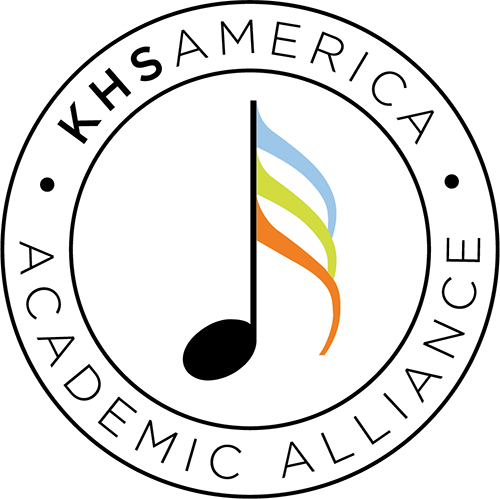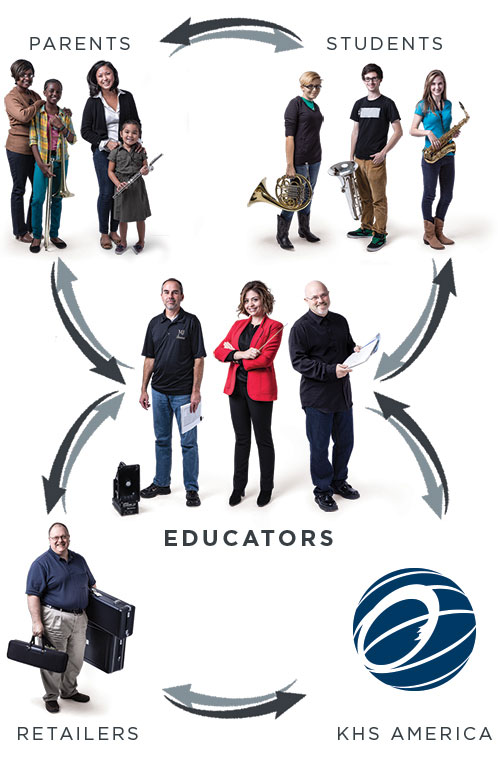As with every year, especially in education, change is upon us! That’s going to be one thing we can always count on. While we can’t control many of the directives and initiatives that are required of us, what we CAN control is our reaction to them and how we CHOOSE to deal with them. Many of these items shouldn’t be thought of as things that impede our classroom day to day teaching, but as ways that we can become better at our own teaching, organization, and advocacy.
Before you begin rolling your eyes and telling me how you just got familiar with the old standards (and how you never did figure out how to do the singing/playing of instruments or that improvisation thing), take a breath!
To be successful in the classroom, we all have to have definable goals and a focus of direction for our instruction. The key component of making these goals is to have a set of standards for what you expect to accomplish and how you want to get your students to the desired level. Whether you take your standards for curriculum from an older curriculum guide, state or national standards, or a tried and true set of goals, you use standards in your classroom (if you don’t, perhaps we need to talk…)! Our National Standards have been in place for some time now and I think we have all had issues with how to incorporate so many things into our curriculum. How do instrumental directors incorporate singing? How do choral directors incorporate playing of instruments? What about that improvisation section, and are we all doing composing and arranging? These have been the subject of discussion for several years prior to tying the standards to our classroom teacher evaluations. Now that we have them posted in our classrooms and are expected to reference these when we teach, here “they” go and start changing them!
This is where the “new” standards come in. Partly as an answer to these frustrations we’ve experienced and as a means to tie what we do in music education to 21st century skills and college readiness, other teachers have developed these revisions. This has been a long process and the “rollout” of the new standards began last year with opportunities for review from music teachers at all levels all across the country. We’ve had a more “official” introduction of these at the NAfME Conference in Nashville in October. We now can begin the implementation at our state level.
What you’ll find are fewer small standards and some purposefully broad areas that allow YOU as a teacher to fit your style of teaching to incorporate these areas into your lessons and rehearsals. As we begin to look at these, think of how what you’re already doing (or have done for years) is already in line with these areas! Then, how can you utilize these to better teach your students and assess their performance? I think you may be pleasantly surprised at how the areas of “perform, create, and respond” translate into everyday music education! This is the stuff WE have been doing all along and now our colleagues in the school are going to be expected to fit their subjects into this model. WE have an opportunity to help them and incorporate MUSIC into all of our subjects IF we take this challenge and use it to our advantage; we have a built in advocacy moment just waiting for us!
Use your colleagues and coworkers to spark creativity (or arguments!) and let’s use this as an opportunity to make us better teachers and our students better musicians. The endless paperwork and forms, the classroom observations, new requirements, and everything else we have thrown on us each year; through all of it, let’s not forget the real reason that we started doing this “music” stuff in the first place! In all of those mounds of clerical “stuff” we teach an incredible art form to our students! YOU are the most important part of the day for so many children and YOU teach music!
Adapted (with permission): Dr. Jeffery Phillips, “President’s Message,” Tennessee Musician, Winter 2014
About the Author
Dr. JEFFREY PHILLIPS is in his 29th year of teaching at Hendersonville High School in Hendersonville, Tennessee, where he is the Director of Fine Arts in addition to conducting the Symphonic Band, Jazz Ensemble, and Marching Band. He has also taught at Pope John Paul II High School in Hendersonville, Tennessee and as adjunct trombone instructor at Western Kentucky University. He is in his 11th year on the Applied Music Faculty at Belmont University where he teaches the trombone studio and performs with the Belmont Faculty Brass Quintet. He has earned degrees from Middle Tennessee State University, Western Kentucky University, and Austin Peay State University, and California Coast University. As a performer, he remains active as a freelance trombonist in the Nashville area performing with groups such as the Jack Daniels Silver Cornet Band, the Nashville Wind Ensemble and the Nashville Symphony. Phillips has conducted clinics throughout Tennessee, Kentucky, North Carolina Alabama, Florida, and Mississippi for students in middle school through college and is active as an adjudicator for music groups of all genres throughout the Southeast. In 2012, he founded the Sumner County Community Concert Band which he conducts. He has served as President of the Middle Tennessee School Band and Orchestra Association, served two years as the TMEA State Band Chair and served two years as the National Treasurer for the American School Band Directors Association. He was elected President-elect for the ASBDA and served the office of President of ASBDA for the 2008-2009 year. He is currently the President of the Tennessee Music Education Association. Phillips is also a Jupiter Band Instrument Performing Artist and Educational Clinician and performs on Jupiter and XO trombones and euphoniums exclusively.
The content of this Blog article or Banded Story is the intellectual property of the author(s) and cannot be duplicated without the permission of KHS America and/or the author(s). Standard copyright rules apply.



 We look forward to the evolution of this exciting program, and welcome feedback on how we can further enhance the work that you do in music education.
We are excited to offer your program the opportunity to join the KHS America Academic Alliance today.
We look forward to the evolution of this exciting program, and welcome feedback on how we can further enhance the work that you do in music education.
We are excited to offer your program the opportunity to join the KHS America Academic Alliance today.